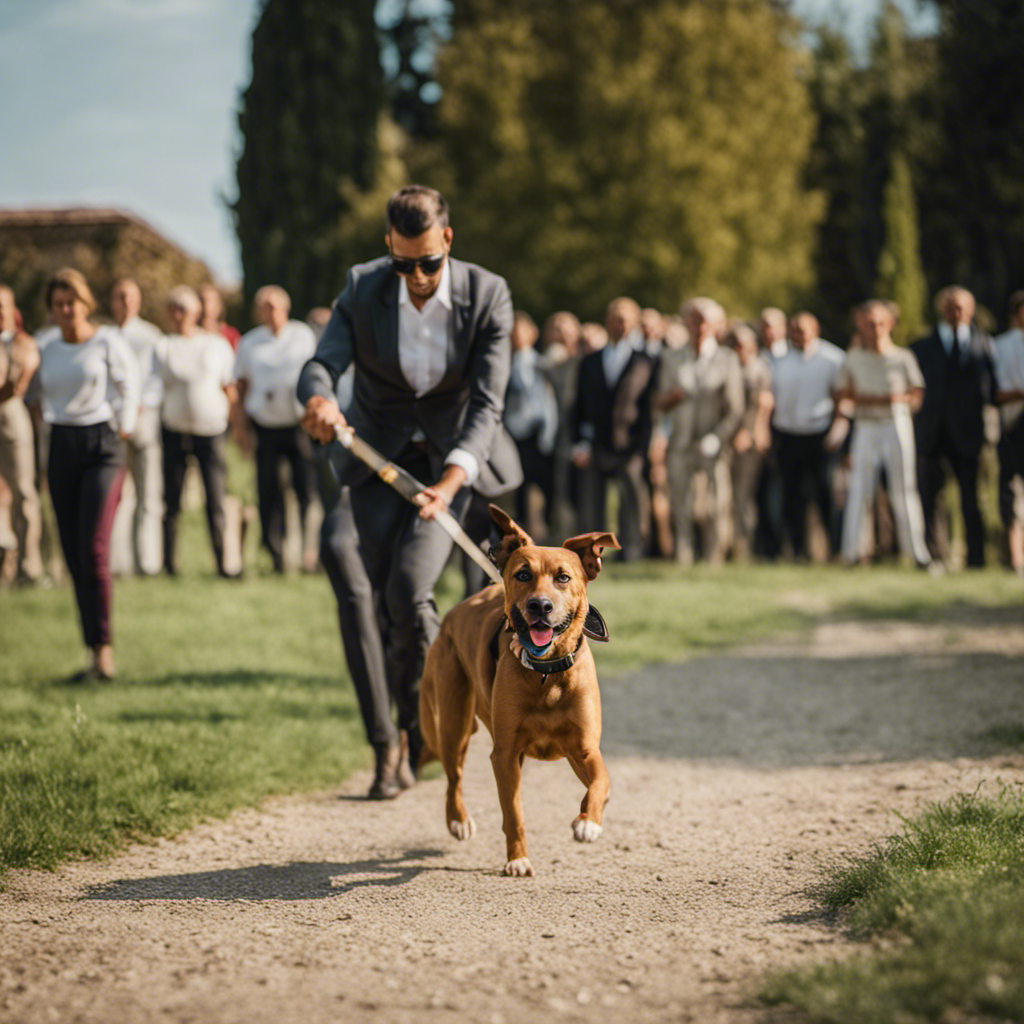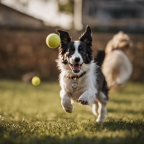Click and GO TO THE BEST DOG NAME GENERATOR HERE

If you’re looking to enhance your dog’s obedience training, mastering the ‘Indietro’ command is essential. This Italian dog command, meaning ‘back,’ allows you to guide your furry friend to move in reverse with ease.
In this informative article, we will provide you with a step-by-step guide on teaching ‘Indietro,’ offer solutions to common challenges, and explore advanced applications of this command.
Get ready to take your dog’s training to the next level as you delve into the world of ‘Indietro’ commands.
Key Takeaways
- ‘Indietro’ is essential for controlling a dog’s movements.
- Teaching ‘Indietro’ improves overall obedience and control.
- It allows better control over a dog’s movements, especially in dangerous situations.
- ‘Indietro’ helps establish the owner as the leader and reinforces the importance of following commands.
The Importance of Teaching ‘Indietro
You should prioritize teaching ‘Indietro’ because it’s essential for controlling your dog’s movements. Teaching your dog the command ‘Indietro’ has numerous benefits in different situations. It can significantly improve the overall obedience and control of your furry friend.
One of the key benefits of teaching ‘Indietro’ is that it allows you to have better control over your dog’s movements. By simply commanding ‘Indietro,’ your dog will understand that it needs to move backward. This is particularly useful in situations where your dog may be approaching a dangerous or off-limits area. By giving the ‘Indietro’ command, you can quickly redirect your dog away from potential harm.
Furthermore, teaching ‘Indietro’ can enhance your dog’s overall obedience. It helps establish you as the leader and allows you to effectively communicate your expectations. By incorporating ‘Indietro’ into your training routine, you’re reinforcing the importance of following commands and maintaining self-control.
In addition, teaching ‘Indietro’ can be particularly useful in situations where your dog needs to back away from people or other animals. It can help prevent any potential conflicts or uncomfortable interactions, ensuring a safe and harmonious environment for everyone involved.
Overall, prioritizing the teaching of ‘Indietro’ to your dog is a crucial step in improving their obedience and control. It provides a valuable tool for redirecting their movements and establishing your leadership. So, start incorporating ‘Indietro’ into your training sessions and enjoy the benefits it brings to your dog’s behavior.
Step-by-Step Guide to Teaching ‘Indietro
Follow this step-by-step guide and successfully teach your dog the command ‘Indietro’. Teaching ‘Indietro’ to older dogs can be a rewarding experience, and incorporating this command into obedience competitions can greatly enhance your dog’s performance.
Here’s how to do it:
-
Start with the basics: Before teaching ‘Indietro’, make sure your dog has a solid understanding of basic commands like ‘sit’, ‘stay’, and ‘come’. This will provide a foundation for learning more complex commands.
-
Introduce the command: Once your dog is comfortable with the basic commands, begin introducing ‘Indietro’. Use a clear and distinct voice command, accompanied by a hand signal. For example, say ‘Indietro’ while pointing backwards with your hand.
-
Reinforce and reward: When your dog starts taking steps backward in response to the command, reinforce the behavior with praise and treats. Be patient and consistent, gradually increasing the distance your dog moves backward.
Teaching ‘Indietro’ to older dogs requires time and dedication, but with consistent training, they can master this command. Incorporating ‘Indietro’ into obedience competitions can impress judges and showcase your dog’s advanced skills.
Common Challenges and Solutions for Teaching ‘Indietro
Teaching ‘Indietro’ can present challenges, but with patience and consistency, you can overcome them and successfully train your dog. When it comes to teaching this command, there are a few common mistakes that people often make.
One mistake isn’t breaking down the command into smaller steps. It’s important to start with simple movements and gradually increase the difficulty.
Another mistake isn’t using positive reinforcement consistently. Make sure to reward your dog for any progress they make, even if it’s just a small step in the right direction.
If you’re experiencing issues with ‘Indietro’ training, there are a few troubleshooting techniques you can try.
First, evaluate your body language and voice tone. Dogs are highly attuned to these cues, so make sure you’re giving clear and consistent signals.
Additionally, take a step back and assess the training environment. Are there any distractions that may be hindering your dog’s focus? Removing these distractions can greatly improve their ability to learn.
Advanced Applications of the ‘Indietro’ Command
To enhance your dog’s training, try incorporating advanced applications of the ‘Indietro’ command, such as navigating obstacle courses with their newfound back command skills. This technique can take your dog’s agility training to the next level and improve their recall skills. Here are three advanced techniques for incorporating ‘Indietro’ in agility training:
-
Reverse Weave: Set up a series of weaving poles or cones in a straight line. Start by walking forward with your dog, then use the ‘Indietro’ command to make them back through the weave. This challenges their coordination and strengthens their understanding of the command.
-
Backing Over Jumps: Place a low jump in front of your dog and command them to jump, then use the ‘Indietro’ command to make them back over the jump. This exercise promotes body awareness and helps them develop better control over their movements.
-
Backing Through Tunnels: Teach your dog to back through tunnels by using the ‘Indietro’ command. Start with a short tunnel and gradually increase the length as they become more proficient. This helps them become more agile and adaptable in different agility course scenarios.
Incorporating ‘Indietro’ in these advanced ways not only adds variety to your dog’s training but also strengthens their obedience and problem-solving skills. Remember to reward and praise your dog for their efforts and progress. With consistent practice, they’ll become more confident and proficient in their agility training.
Tips for Mastering ‘Indietro’ Training With Your Dog
Try using a few different techniques and practice consistently so that you can master ‘Indietro’ training with your dog. When it comes to training stubborn dogs, effective techniques are essential for success. One method is using positive reinforcement, such as treats or praise, to reward your dog when they correctly respond to the ‘Indietro’ command. This will motivate them to repeat the behavior.
Another technique is breaking down the training into smaller steps. Start by teaching your dog to move back a few inches, gradually increasing the distance as they become more comfortable. Consistency is key throughout the training process. Use the command consistently and make sure everyone in your household is on the same page.
To incorporate ‘Indietro’ into off-leash training exercises, start by practicing in a controlled environment, such as a fenced yard. Begin with your dog on a long leash and give the ‘Indietro’ command while gently guiding them backward. Gradually increase the distance between you and your dog until they can confidently perform the command off-leash. Remember to use positive reinforcement and reward your dog for their successful response.
With patience, consistency, and the right techniques, you can master ‘Indietro’ training with your dog. Keep in mind that every dog is unique, so adapt your training methods to suit their individual needs and personality. Happy training!


